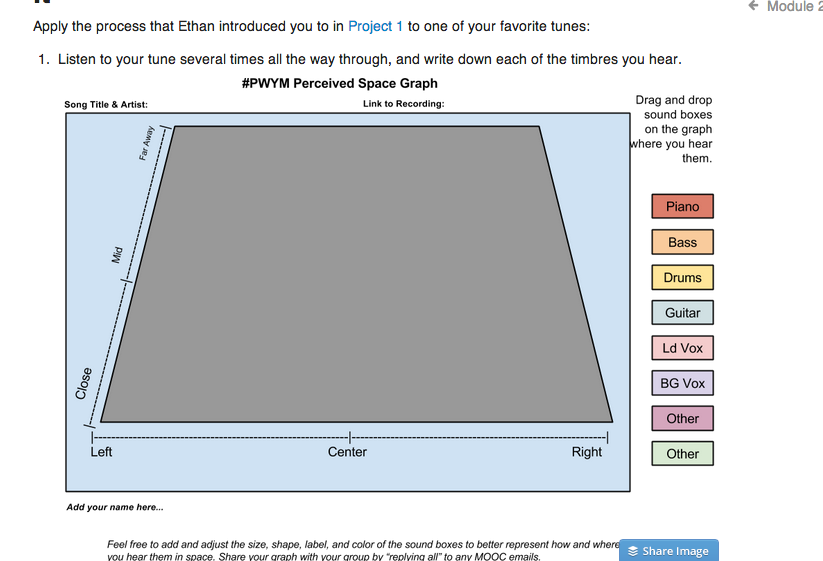Learning Design: Assignments, Length, and Tasty Theory
How to Design a Learning Experience that Works
Jim Groom is the wizard behind the curtain at ds106, or Digital Storytelling 106–widely known as one of the most vibrant and successful learning communities on the internet. We decided to ask him about how he designs for learning. In this chat, we tackle the following questions:
- What were the design principles behind your course?
- How do you develop content for an open online course?
- How do you motivate learners in order to sustain their interest?
Learning Design: Motivation, Play and Styles
When Did Learning Get so Boring? Remember playing with Legos as a kid? You were probably relaxed, curious, and not particulary focused on what the final outcome might look like. You might have built a little bit, then decided what was working and what wasn’t, abandoned some bits, kept others and perhaps lost track of time in the process.
At P2PU we strive to create learning experiences that are like playing with Legos. When we don’t feel the pressure of time, of outcomes, of what other people are doing or of what the “right” answer is, we are able to imagine what’s possible and follow our passions.
For every learning module, consider the following design principles:
Playful projects.
How could someone make a project where they fiddle, tinker and lose themselves in it? Open-ended projects and thematic prompts help learners find their own paths and ideas. These types of assignments nurture “flow”, where learners become completely engaged and intrinsically motivated to work on an activity.
Design for all senses.
We recall information best when it engages several of our senses. Take, for example, the abstract concept of “social stratification.” How else could someone learn this concept, and even further, display that they understand the concept? They might
- display census data on a map
- interview 5 people in a certain radius and share the interviews on a website
- create a video documentary about grocery stores in an area
- create a time lapse photography about the gentrification of a neighborhood
Low floors, wide walls.
We recommend activities that can work for both beginner and advanced learners. Activities of this type have few barriers to entry ( and make use of easy-to-use tools like Googledocs or Twitter) but are flexible enough to allow advanced folks to add layers of more complex elements. That way beginners can learn from the projects of advanced learners, and more advanced students are still challenged by the project. For example, say an assignment is to create a manifesto. Both novice and experienced writers can articulate their beliefs and share core values. Experienced writers could take it further with persuasive techniques or speechwriting.
Focus on themes.
Instead of encouraging learners to compete to solve a problem, select a thematic focus for a project. Instead of working deductively towards a “correct” solution, learners are free to follow their personal passions. The Science Leadership Academy in Philadelphia is a formal learning setting which anchors each year with a theme: identity, systems, change and creation. The assignments learners undertake map onto those themes and prompt learners to create their own understanding of the concepts.
###Inspire with diverse xamples. Showcasing a range of work inspires learners to imagine what’s possible (as opposed to what’s correct). At the same time, an array of different projects models inclusivity, builds a broad community of learners. For instance, the homepage for the 3-D printing community Shapeways features projects that range from an egg-cup to accessories to bling out your Google Glass.
Examples
Play With Your Music
For Play With Your Music an online music remixing course, learners were prompted to select their favorite song and write down where they heard the various instruments in space. From there, they created a graph to visually show where they perceived the instruments and sounds in the song.

At the same time, we didn’t want learners to feel constrained by the structure of the activity. If learners wanted to try another tool, we welcomed that creativity:
As you might have guessed, we encourage you to be creative in this course. If you find our Perceived Space Graph Template limiting, feel free to use your imagination and develop a different template than the one shared in Step 2, above. Some people prefer to work with pens, markers, and paper. For others, Google Charts is fine. If you decide to create multiple >space graphs for your song, we encourage you to edit them into a video using iMovie or the free web-based Mozilla Popcorn Maker11 synchronizing your graphs to the recording. Whatever method you use, be sure to either share a link or take a photograph of it and post a photo of it to your learning ensemble.
We want learners to feel comfortable and give them options for how to engage. Like the Play With Your Music course we mentioned above, we encourage folks to convey the information in different ways–visually (like mental maps), audially (like pronounciation clips), or via text (like readings or Wikipedia entries). We recommend that you offer content that appeals to different styles, and give learners options for what sorts of projects they might want to undertake.
Story Hack Day
For Story Hack Boston SoundCloud, MIT and P2PU hatched a plan to revamp the hackathon, peer-learning style. 44 storytellers and hackers came together to tell stories. We offered 4 thematic tracks for the day-long event:
- Heartbeat of MIT: Soundscapes
- Arc of the API: How to Use APIs to Tell Stories
- Beyond Vox Pop: Creative Ways to Engage Your Audience
- Storyslamming
The Vox Pop group wanted to showcase the different perceptions Hackers and Storytellers had about each other, and decided a series of interviews would surface those ideas. The result was an extended “chain” of conversations between the different groups:
Full recap at The Hackathon, Revamped: Recs for Mixing Hackers & Storytellers